Kraków 2017-08-11
197 Section 1964-06-01
OKB Suchoj Su-7 U
Poland
History
Suchoj Su-7 U - two-seater combat aircraft.
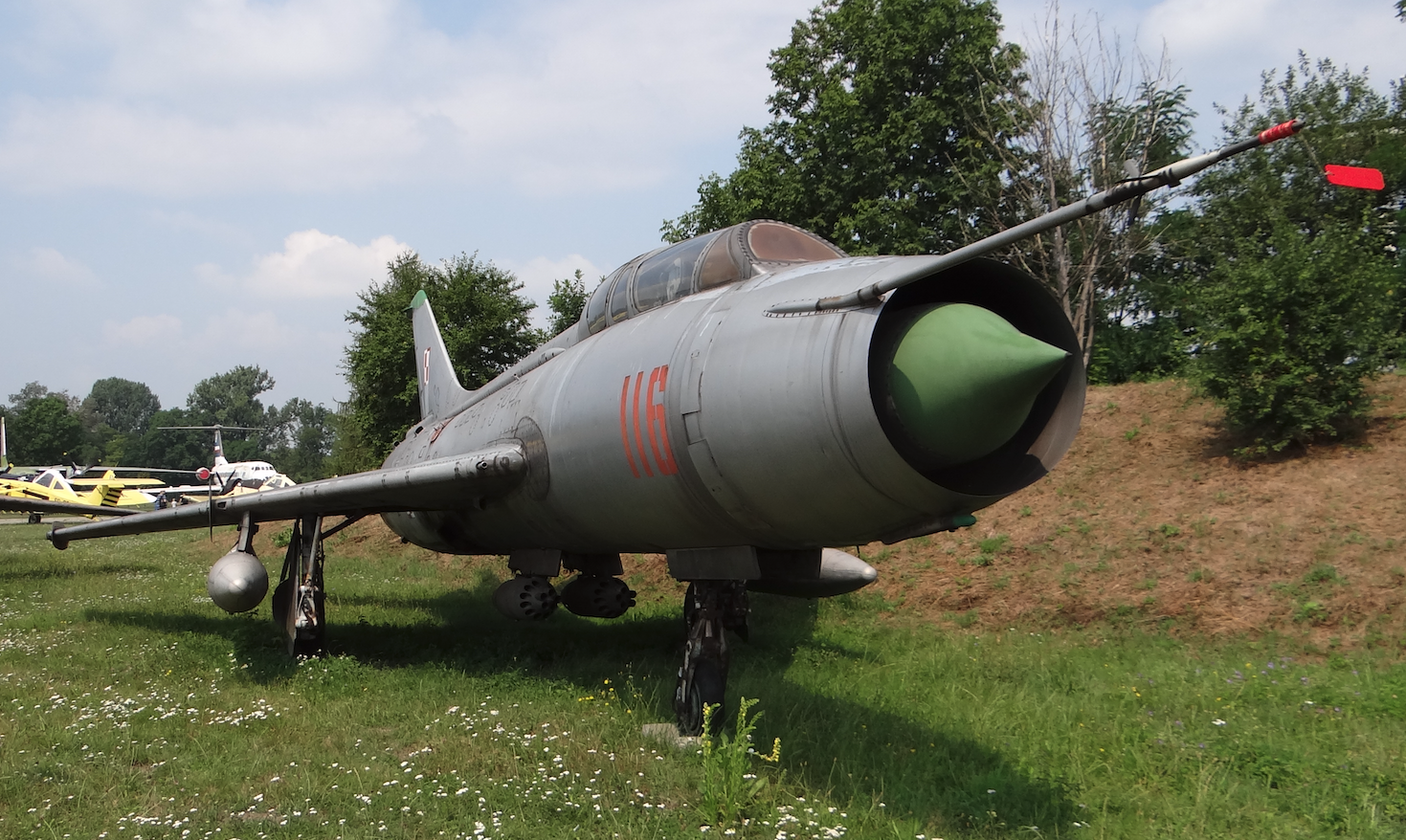
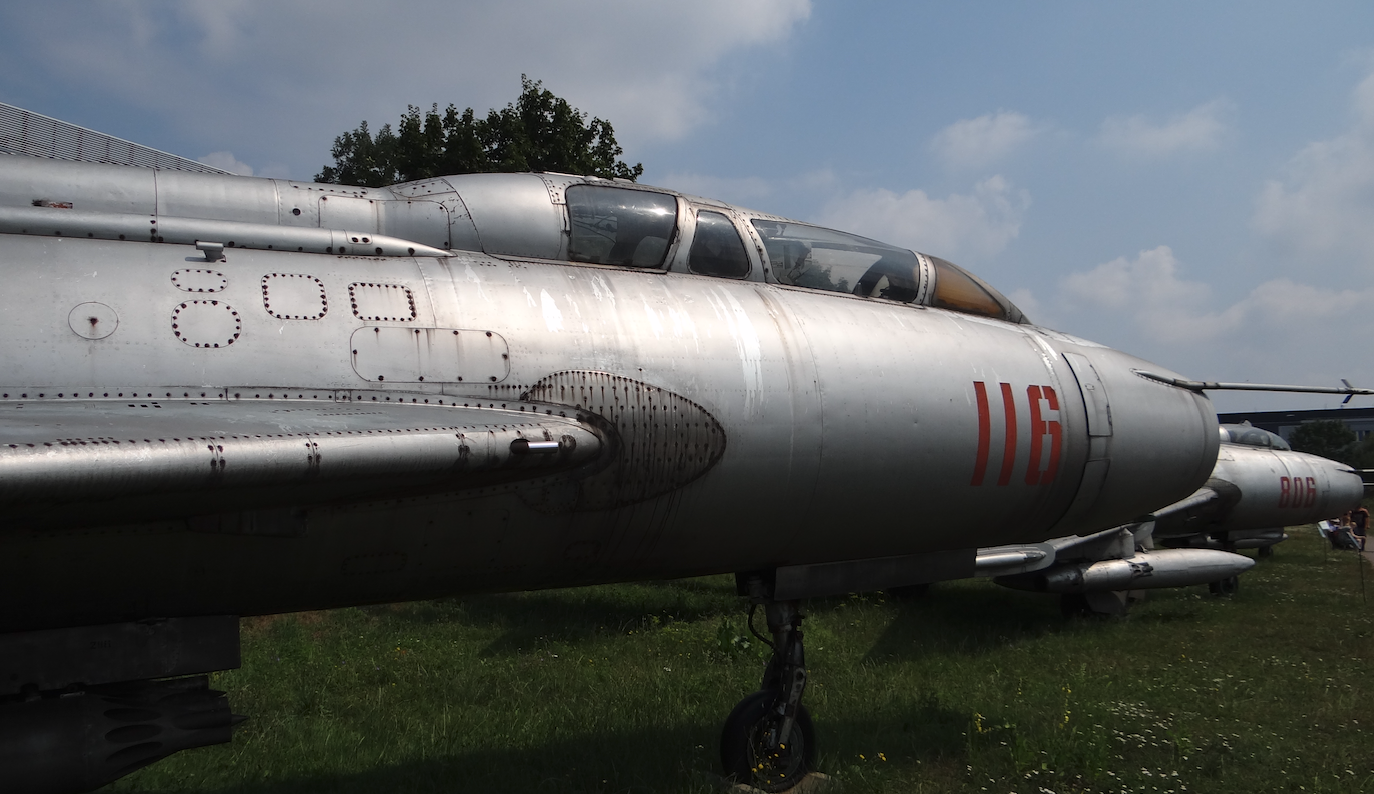
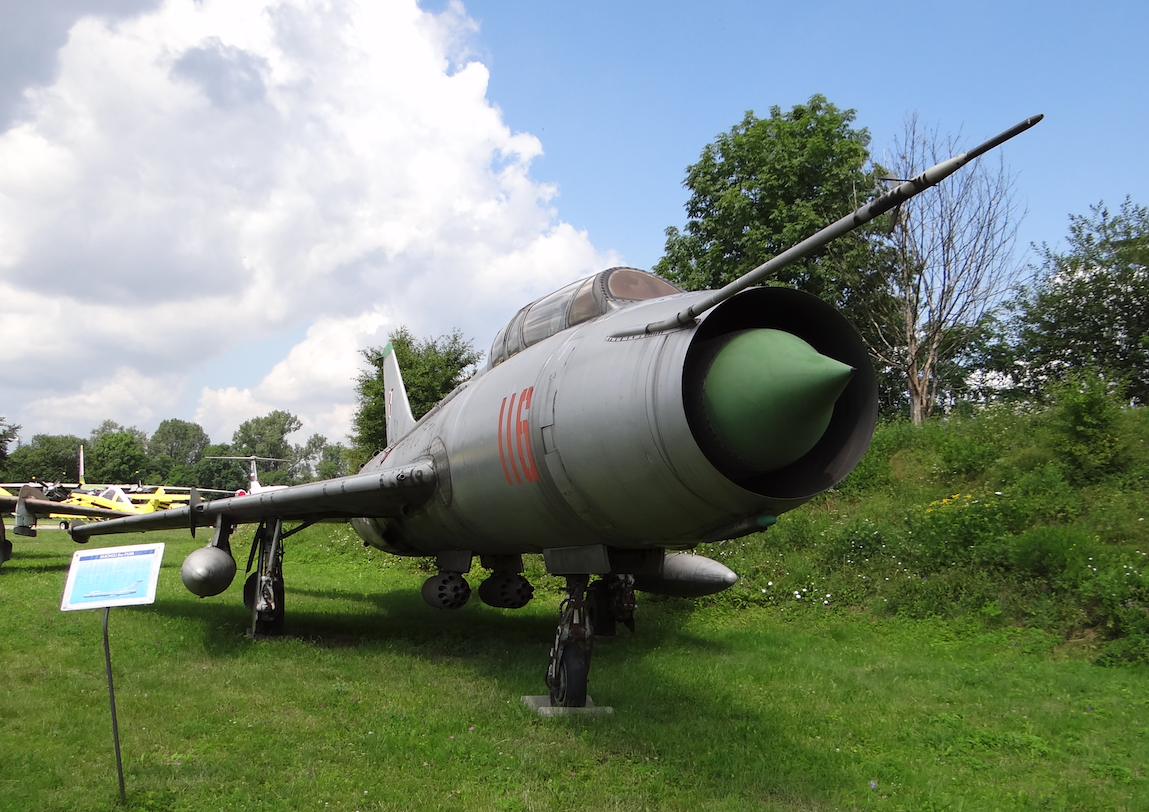
Suchoj Su-7 B
The concept of atomization and rocketization of the battlefield brought real development of the Su-7 aircraft. Nuclear warheads were to be carried by missiles and barrel artillery. But some of the enemy's promises (moving targets) were to be destroyed by air bombs. Supersonic aircraft have been designated for this task. Due to the high speed, large payload, powerful engine, adequate range and, equally important, the need to quickly put the machine into service, the choice fell on the construction of the OKB Suchoj office. The prototype of the hunting-bomb version was marked with the index S-22-1.
Suchoj Su-7 U ( ros. Ucziebnoj )
Due to problems with the first Su-7 serial aircraft, the development of the training and combat version was postponed. The lack of this aircraft caused a lot of problems in training young pilots for such a difficult to pilot aircraft such as Suchoj. Two prototypes of the school aircraft marked U-22-1 and U-22-2 were created in the second half of 1965. The pilots were still waiting for this aircraft, so soon the machines underwent factory and then state tests, so that the first serial aircraft rose into the air in April 1966. Its production was carried out until 1971.
The two-seater Su-7 U was based on the Su-7 BM aircraft. To build the second cabin in the fuselage the front of the fuselage had to be lengthened by 200 mm. In addition, the equipment previously used behind the pilot's seat was moved to the upper fairing extending from the cabin to the vertical stabilizer. The fuselage fuel tanks were also rebuilt, but their capacity did not change. The cabins had two covers opened pneumatically upwards.
A periscope was installed in the second cockpit to allow forward observation. The periscope was made of two pieces of polished metal. Each of its are set at an angle of 45 degrees. The periscope folds and unfolds with one lever. The extended periscope can be used for a flight speed of 600 km / h. Newer versions of the periscope can be used up to a flight speed of 850 km / h.
The crew received a special version of KS-4U-22 ejection chairs. The pilot's and the instructor's seats were always fired, regardless of who initiated leaving the plane.
The landing gear of the aircraft (often treated badly by young pilots, especially during landings) and its brakes were strengthened. The front shin of the chassis was equipped with brakes and could be controlled hydraulically. The chassis braking system has received a system that sprinkles alcohol with wheel hubs for more efficient cooling.
The increase in the weight of the aircraft caused restrictions in the armament carried, the maximum suspension capacity was limited to 2,500 kg, some machines did not receive a left-wing 30 mm cannon. However, the possibility of carrying nuclear bombs was left. The sight used on the school plane is a modification with Su-7 BM marked as ASP-5ND-7U replaced from the 12th production series by a newer ASP-PF-7U.
10 copies of Suchoj Su-7 U planes were used in the Polish Army.
Written by Karol Placha Hetman
Kraków 2017-08-11
197 Section 1964-06-01
OKB Suchoj Su-7 U
Poland
Construction
Two-seater, supersonic direct support plane on the battlefield and nuclear strikes.
Construction Suchoj Su-7 U
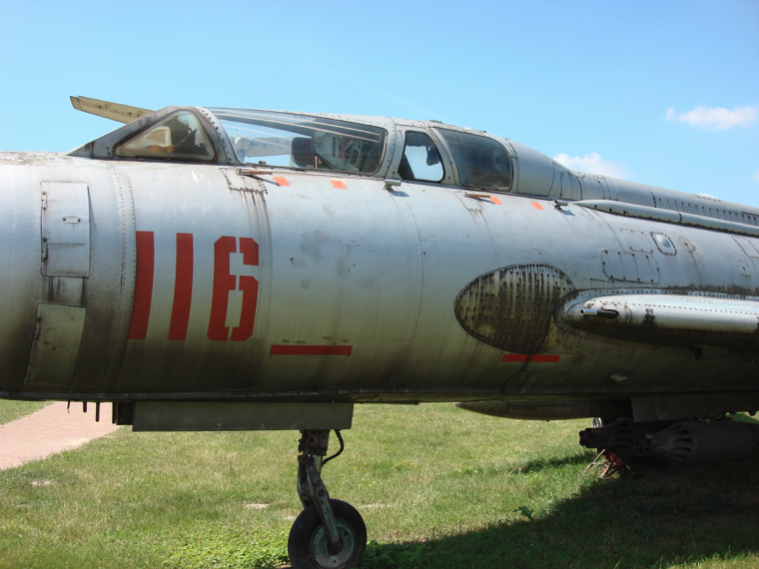


Differences from the one-seater version.
The main difference is the use of a double cabin in a tandem arrangement. The hull is 0.20 m longer. A superstructure was placed on the hull in which equipment moved from behind the pilot's cabin was placed. Despite the reconstruction of fuselage fuel tanks, its quantity is almost identical to the Su-7 BM version.
Individual cabin covers are lifted up to the rear pneumatically. The rear cabin is equipped with a folding periscope. Its mirrors are made of polished metal. The periscope can be used up to a speed of 600 km / h. (The reinforced version of the periscope is used up to a speed of 850 km / h).
The crew received a special version of KS-4 U-22 ejection seats, the first pilot's seat and then the instructor's seat always fired, regardless of who initiated leaving the plane. The chassis (often treated badly by young pilots, especially during landings) and its brakes were strengthened. The front shin of the chassis was equipped with brakes and could be controlled hydraulically. The chassis braking system has received a system that sprinkles alcohol with wheel hubs for more efficient cooling.
The increase in the weight of the entire aircraft caused restrictions in the carried weapons, the maximum load capacity of the suspensions was limited to 2,500 kg. Some aircraft did not receive a 30-mm left wing cannon. However, the possibility of carrying nuclear bombs was left. The sight used on the school plane is a modification with the S-7 BM marked as ASP-5ND-7U replaced from the 12th production series by the newer ASP-PF-7U.
Data T-T the Suchoj Su-7 B aircraft
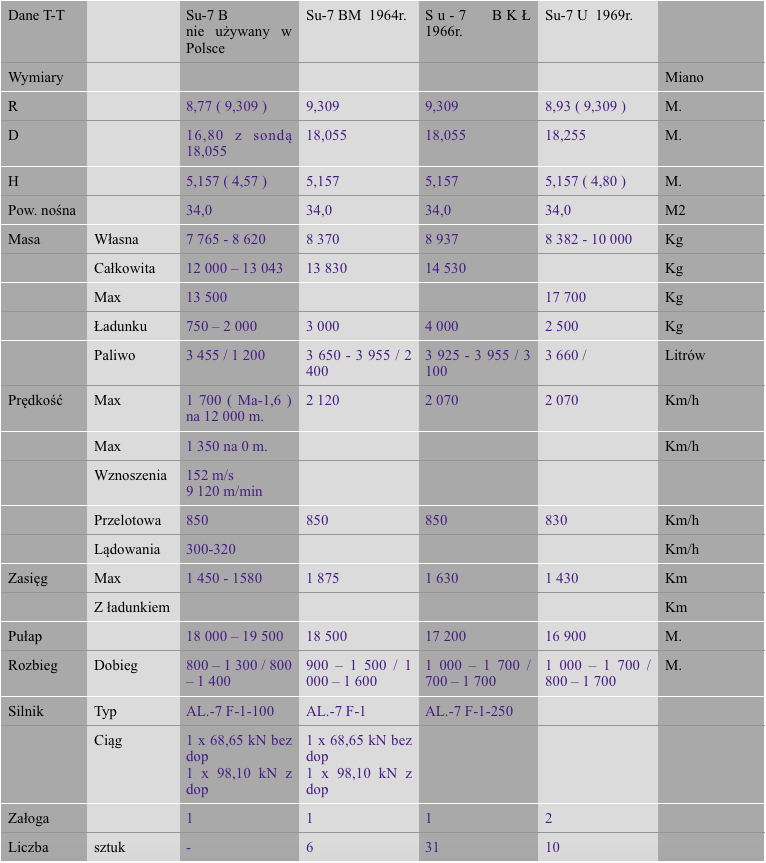
Written by Karol Placha Hetman
Kraków 2017-08-11
197 Section 1964-06-01
OKB Suchoj Su-7 U
Poland
Tally
The tally of Sukhoi Su-7 planes used in the Polish Army can be found in Section "Sukhoi Su-7 B. 1964.
Written by Karol Placha Hetman
